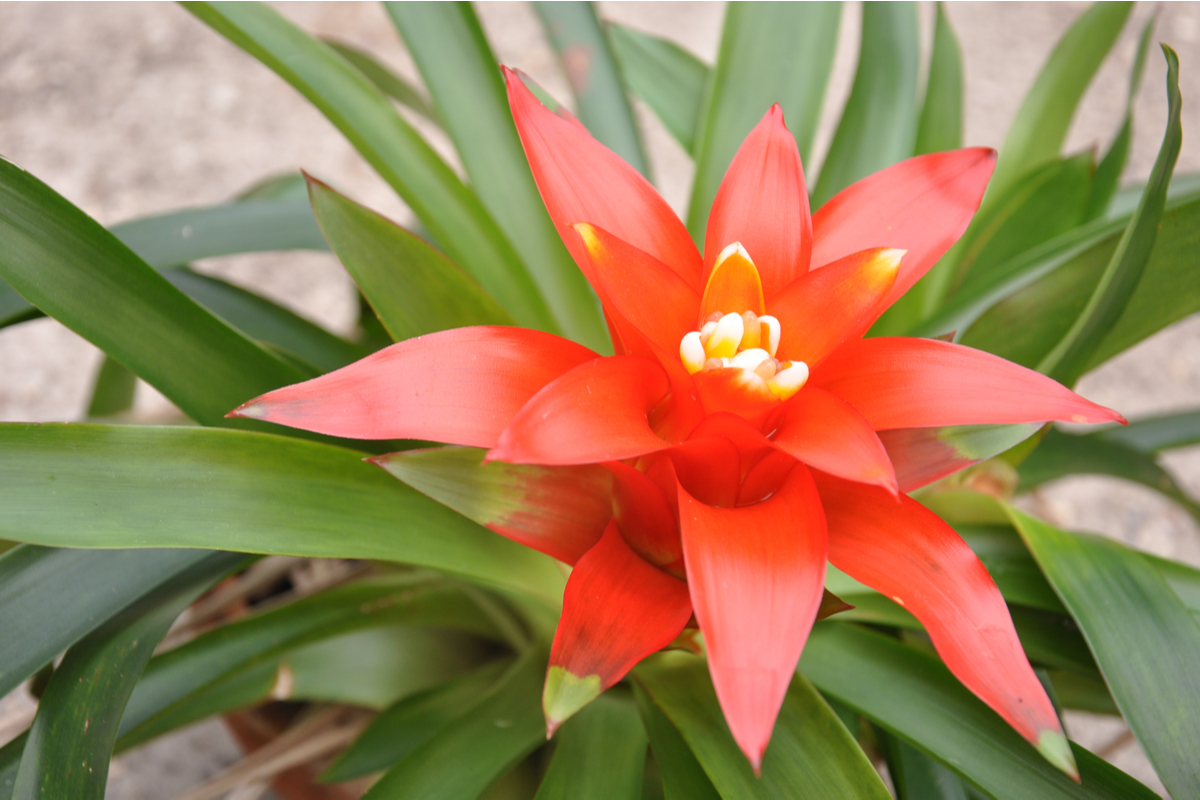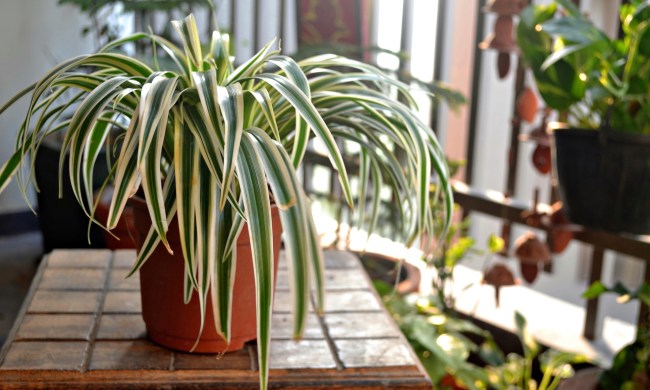You’ve seen them in a store or nursery: Beautiful, sword-like plants with green leaves and a vibrant bloom. More often than not, when you purchase a bromeliad, it’s already close to it’s full size (especially if it already has a flower). This is because, unfortunately, many places sell bromeliads close to the end of their life cycle, and thus, they’re already mature. If you buy one without a bloom, or start a bromeliad from a pup, you may be wondering how large your new bromeliad will be.
How big do bromeliads get?
A good rule of thumb if you’re growing a bromeliad pup from a fully mature one you purchased at a nursery, is that it’s likely to be around the same size as the parent. It gives you something to plan for but is never a guarantee as things like environment and care do play a factor. When bromeliads are grown as houseplants, they can be anywhere from 1 inch to 2 or 3 feet tall. They grow slow and can have long lives if cared for properly.
Their very unique appearance — sword-like foliage and bright, beautiful blooms — can sometimes give off the impression that this plant requires a lot of work. But in fact, bromeliads are very manageable houseplants (big or small) that will brighten up your space.
Ensuring your bromeliad grows big and strong
There’s no guarantee how big your bromeliad will get. The most you can do is care for it in ways that best meet the plant’s needs. Most bromeliads can fit just fine in smaller pots (around 4 to 6 inches). A common mistake is to use a much larger pot in hopes that it will grow bigger, but this could have a negative effect. Using a pot that’s too large for your bromeliad — as with most other plants — can cause the soil to retain too much water, eventually drowning your plant and rotting the roots.
Instead, it’s best to start with a pot that fits your bromeliad perfectly and repot as needed. Keep your bromeliad in an area with indirect sunlight for the best growing results. It’s also important to water the bromeliad properly. While most other plants require the soil to be watered, a majority of bromeliad varieties have a water tank (or cup) in the middle of the plant that you fill. Once every one to two weeks, you’ll want to fully empty the tank and fill it with fresh water to avoid stagnant water causing negative effects.
Your bromeliad is flowering. Now what?
A bromeliad with a full bloom has not only reached maturity but its full height. When the bloom is fully grown, your bromeliad is often as tall as it will get — but you should still keep providing the best care you can. You’ll still fill the tank with water, change the water regularly, and keep the plant in indirect sunlight. Although your bromeliad has officially begun to die, providing the proper care can help ensure the growth of new pups.
If you’re interested in propagating your bromeliad, this is what your care will be focused on following the blooming and the death of the bloom. Once the bloom dies, the pups will begin to grow from the parent plant. If you aren’t interested in new bromeliads, you don’t have to worry about the pups; however, if you are, you’ll want to continue caring for your plant.
Propagating your bromeliad
Once your bromeliad pups are grown to about half the size of the parent plant, they’re ready to be separated and repotted for propagation! You’ll want to get a nice set of pruning shears
When will my new pups bloom?
The new blooms will depend on when your pups reach maturity. After a year of growth, you can help encourage your bromeliad pup to bloom (though you may not end up with very large bromeliads). To do this, empty out your pup’s water tank and place a ripe apple inside. Cover the pup with a clear plastic bag, sealing it around the pot, and put it back where you originally had it. As the apple slowly decays, it will release ethylene gas, which encourages bromeliad blooms.
Letting your pup reach maturity naturally, though, will be your best option to help ensure you have large bromeliads. Size does vary, and the parent plant is never a guaranteed example of the height of your pups. Providing proper care will be your best bet to beautiful, tall bromeliad plants.




